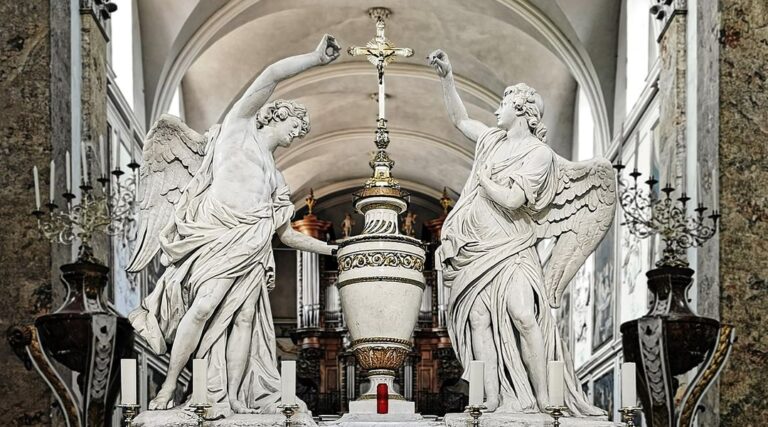In recent years, French media has increasingly reported incidents of theft and intrusion targeting Christian places of worship. On March 14th, an offering was stolen during lunchtime from a church near Narbonne in southern France. In January, a couple in their 50s were caught stealing from a parish in the Provence region. They had been regularly siphoning money from donation boxes over several months. A month earlier, a church in Bordeaux, in the southwest, was broken into—the chapel safe was forced open, and the candle room was ransacked. In September 2024, during a service at the parish of Seine-Saint-Denis in the Greater Paris area, thieves made off with the entire parishioner collection, estimated at $2,900.
These examples point to a troubling trend.
“In 2022, we recorded 630 thefts in Christian places of worship—including churches, chapels, and monasteries,” said Colonel Marie-Laure Pesant, spokesperson for the French National Gendarmerie. “That number rose to 740 in 2023 and 780 in 2024. That’s a 24% increase over two years.”
“But it’s important to keep things in perspective,” she added. “While concerning, these thefts are relatively few compared to the 150,000 robberies reported across France in 2024 alone. France has over 40,000 churches and chapels.”
According to the radio station Europe 1, thefts inside religious buildings rose to 288 in 2024—a 7% increase from 270 the previous year, based on national police data. Some regions are more affected than others, particularly Grand Est (which borders Germany, Luxembourg, Belgium, and Switzerland), as well as areas surrounding Paris and Nouvelle-Aquitaine in the southwest.
From Cash to Candlesticks
Items commonly targeted include cash from donation boxes, candlesticks, statues, paintings, vases, and even religious relics.
“It’s difficult to estimate the total value of stolen goods because it varies widely,” said Colonel Pesant. “Some churches and cathedrals hold objects of significant historical and artistic value.”
A 2023 report from the Ministry of Culture on the theft, damage, and recovery of protected historical objects found that most missing or stolen items came from religious buildings.
A Network of Organized Crime
Religious artifacts are particularly attractive to thieves.
“They’re considered safe investments,” explained Pesant. “There are many channels for resale. In some cases, the high value of the metal alone leads criminals to melt the items down.”
The Gendarmerie has identified several types of perpetrators.
“While there are opportunists who take advantage of unlocked churches, more often we’re seeing organized groups targeting specific objects—or serial offenders who strike multiple churches and export or resell the goods through various networks.”
A Call for Greater Protection
The French Conference of Bishops (CEF) is treating the issue with urgency and is collaborating with the Central Office for Religious Affairs.
“We receive monthly reports not just of theft, but also of vandalism and physical assaults,” said a CEF representative. “The solution clearly lies in improving security measures to protect places of worship.”
Building a Catalog of Sacred Objects
To support parishes, the National Gendarmerie offers security consultations.
“We recommend minimizing the time churches are left open and installing surveillance systems—especially in areas where valuables are stored,” said Pesant. These suggestions are particularly important for churches that remain open to the public throughout the day.
Authorities are also urging parishes to keep detailed inventories of their sacred objects.
“Photograph each item. Document its material, date of acquisition or creation, artist’s name, serial numbers, and any distinguishing marks or damage,” Pesant advised. “There are also commercial tagging solutions, such as invisible stickers or micro-patches. These allow hidden identifiers to be placed on objects, making recovery easier if stolen items are found.”
More Than Just Theft
Theft isn’t the only rising threat. Churches are also facing an increase in break-ins and arson. In 2024, nearly 50 church fires were reported—a 30% rise from the previous year.
The growing wave of thefts, arson, and vandalism against churches in France underscores a deeper concern about the vulnerability of sacred spaces in an increasingly uncertain world. While the numbers may seem small in the context of nationwide crime, the symbolic and cultural loss is significant. These incidents not only threaten religious heritage but also challenge communities to find new ways to safeguard places meant to offer peace, reflection, and continuity. As authorities, clergy, and parishioners respond with heightened vigilance and practical measures, the hope remains that these sanctuaries can continue to serve as safe havens—both spiritually and culturally—for generations to come.




